Help shape priorities for protecting natural resources and let us know how you would like to be engaged
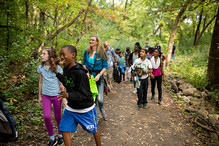
We all play a role in protecting our natural resources, and we need to hear from you. We are seeking input from the community as we update the Hennepin County Natural Resources Strategic Plan, which will define our natural resources goals and strategies for the next 10 years.
About the Natural Resources Strategic Plan
|
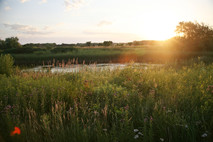
The Hennepin County Natural Resources Strategic Plan guides the county’s work to improve, protect, and preserve natural resources and provides a framework for our natural resources policies, programs, and partnerships.
The updated plan will seek to better align with new county initiatives, shifting demographics, and changing landscapes. This is the first opportunity to incorporate the county’s climate and racial equity priorities into the foundation of the plan.
Current feedback opportunities
We will be seeking input from the community throughout the year-long plan development process to ensure your values and priorities are reflected.
Take our survey by August 1, 2021, to help shape priorities and let us know how you would like to be engaged in the update of the plan.
Learn more and stay up to date
Learn more about the county’s role in protecting natural resources and the plan update process and timeline at hennepin.us/natural-resources-plan.
Sign up for Natural Resources Strategic Plan email updates to stay informed of the process and opportunities to provide feedback at each step.
|
On June 1, the county board advanced efforts to develop organics recycling infrastructure by adding an anaerobic digestion facility to the county’s 2021 capital budget and approving a bonding request of $21 million for the state’s 2022 bonding bill. The county then released a Request for Proposal for a facility that would be capable of processing a minimum of 25,000 tons per year of organic materials.
The need to increase local organics processing capacity
Organics recycling is the biggest opportunity to reduce our trash. Waste sort studies continue to show that organic materials, including food, food-soiled paper, and compostable products, are the largest proportion of our trash – about 25%. Anaerobic digestion is similar to composting, in that it is a natural, biological process that breaks down organic matter into beneficial products, but without oxygen.
Increasing local capacity to process organic materials is needed to keep pace with growing organics collection programs. The metro area is served by only two compost sites that are at or near capacity. Anaerobic digestion provides an opportunity to expand and diversify local organics infrastructure.
Making progress on climate action and zero waste
Diverting more organics from the trash through anaerobic digestion is one of the foundational strategies in the county’s recently adopted Climate Action Plan and helps the county make progress toward zero waste. Food and organic materials decomposing in landfills produce methane, a potent greenhouse gas.
Climate experts rank anaerobic digester as a top climate solution because the methane created and captured from the controlled process effectively reduces greenhouse gas emissions and creates renewable natural gas, fertilizer, and compost.
For more information, contact John Jaimez at john.jaimez@hennepin.us.
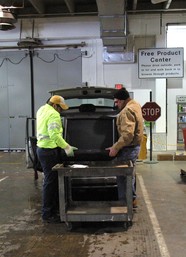
After a year of limited operations in order to follow COVID-19 health and safety guidelines, the Hennepin County drop-off facilities in Bloomington and Brooklyn Park have resumed normal operations. Services that are now available include:
- Appliances, mattresses, and all TVs, including those weighing more than 50 pounds, are accepted.
- Free product centers are open.
- Gas cans should be left to be emptied and will be returned.
As of June 15, fully vaccinated people do not have to wear face coverings in county buildings but are welcome to do so. All visitors to county facilities who are not fully vaccinated are required to wear face coverings.
The drop-off facilities are open Tuesday through Saturday from 9 a.m. to 5 p.m. Find locations, materials accepted, and guidelines for visiting at hennepin.us/dropoffs.
|
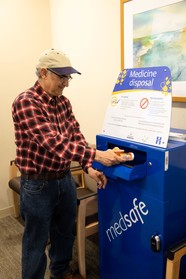
Unwanted or unused medicines should be brought to a medicine drop box for safe and proper disposal. More than 50 medicine drop boxes are available throughout the county for free, safe, and secure disposal of medicines. Find the medicine drop box closest to you.
Properly disposing of unwanted medicines is important to prevent abuse or poisoning and protect the environment. Misuse of and addiction to prescription drugs is at a crisis level in the United States, and medicines flushed down the drain or disposed of in the trash can contaminate bodies of water, harm wildlife and end up in drinking water supplies.
Safe medicine storage
Approximately 2 million Americans misused prescription pain relievers for the first time during 2016, according to the 2017 National Survey on Drug Use and Health. In the Twin Cities metro area, overdose deaths increased 40% from 2019 to 2020 according to the Minnesota Department of Health. Learn how to safely store medications in your home.
|
Hennepin County recently received $500,000 from the U.S. Environmental Protection Agency (EPA) to supplement the county’s Brownfields Cleanup Revolving Loan Fund. The fund provides low-interest loans for environmental cleanup of hazardous waste and petroleum impacts to support the redevelopment of abandoned industrial and commercial properties.
When loans are repaid, the loan amount is returned into the fund and made available to cities and nonprofits for the funding of environmental assessment work to kick-start development projects.
The county has received $7.25 million from the EPA for the Brownfields Cleanup Revolving Loan Fund since 1999. The funding has supported the redevelopment of 10 properties that have created or retained 180 jobs and attracted $30.2 million in private investment.
“We are honored to receive this award from the EPA,” said Commissioner Marion Greene, Hennepin County Board Chair. “The funding will allow us to continue giving low-interest loans for environmental cleanup projects, bridging funding gaps that present barriers to redevelopment. The EPA has confidence that we are supporting places in our county with health disparities, giving priority to low income areas and communities of color. Our goals are to create jobs, enhance green space, and keep the community in place to enjoy the improvements.”
For more information, contact brownfields@hennepin.us.
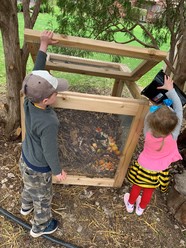
Two versions of the Zero Waste Challenge recently wrapped up – the personalized eight-month challenge in which participants receive coaching from a waste reduction specialist and access to learning opportunities, and the one-month online challenge in which participants earn points for making progress on actions they select and interacting with others.
Participants share practical and successful ways to live a lower-waste lifestyle
At the end of the personalized challenge, households had reduced their waste by 23% and were recycling or composting 70% of their waste.
|

How did they do it? They achieved these results by improving recycling and composting, eliminating disposables, taking steps to prevent waste in the first place, and learning new skills. Participants also had a broader impact by sharing what they learned with others.
Not sure how to get started? The word cloud includes top actions that participants would recommend to others. Learn more about how to live a lower waste lifestyle based on the experience of Zero Waste Challenge participants.
Over 1,000 actions completed in one month!
The 210 online participants completed over 1,000 actions during the month-long challenge. These actions added up to the following impacts:
- Over 100 plastic cups, containers, straws, or pieces of cutlery avoided
- Almost 800 pounds of waste composted
- More than 1,600 minutes spent learning
- Over 800 pounds of carbon dioxide emissions prevented
- More than 200 gallons of water saved
- Almost 150 pounds of packaging waste avoided
Applications for the next round of the personalized challenge will be accepted in August, and an online Stop Food Waste Challenge will be offered in October. Sign up to be notified about future challenges.
|
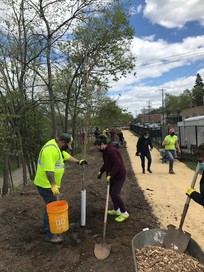
Hennepin County foresters recently wrapped up their spring planting season with more than 130 trees planted at eight sites.
One of these projects involved planting nine sugar maples at the Four Sisters Farm in the East Phillips neighborhood of Minneapolis. When these trees mature, the Native American Community Development Institute (NACDI) will tap the trees for maple syrup.
This project transformed a vacant lot owned by Hennepin County Regional Railroad Authority on the south side of the Midtown Greenway and is part of a larger plan to transform the area to fulfill NACDI’s vision for indigenous food sovereignty and rebuilding traditional indigenous lifeways.
The largest planting project of the spring involved removing ash trees infested with emerald ash borer at the Hennepin County Sheriff Communication Center in Golden Valley. Foresters planted 115 trees of a diversity of species to replenish the forested area around the facility.
Learn more about Hennepin County forestry, and for more information, contact trees@hennepin.us.
|
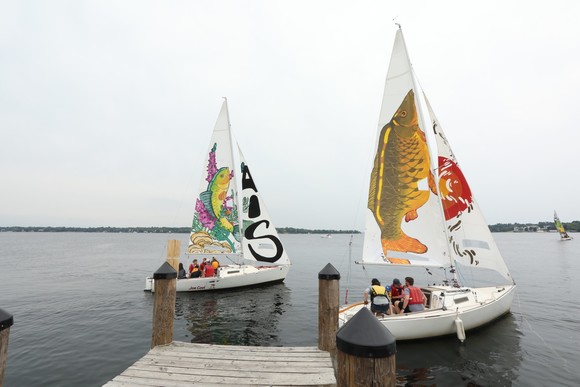
Over the weekend, sets of sails created by local artists highlighting issues with aquatic invasive species were unveiled at the Wayzata Art Experience.
Wayzata Sailing received an aquatic invasive species prevention grant from Hennepin County to work with local artists to create sails to educate the public about aquatic invasive species.
This art installation aims to use diverse and underrepresented voices to form a complete picture of lake usage, history, and connection while creating long lasting and widespread awareness of aquatic invasive species on Lake Minnetonka and in the surrounding community. The artists who created the sails are: Aimi Dickel, Geno Okok, Josh DeSmit, Kati Duesler, and Marlena Myles. See the sails in action on WCCO.
For more information, contact Tony Brough at tony.brough@hennepin.us.
Twin Cities may need to expand landfill space
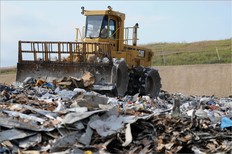
Garbage in the Twin Cities is piling up so quickly that four area landfills may need to expand capacity, according to a recent article on Bring Me the News. Although the metro area has a goal of recycling or composting 75% of waste, about half of the waste 3.3 million tons of waste produced in the metro area each year is managed as trash at landfills or waste-to-energy facilities. The amount of garbage going to landfills increased by 30% in the last year, according to the Minnesota Pollution Control Agency.
|
Burying trash in the ground presents long-term risks to groundwater supplies, and cleaning up old, leaking landfills costs hundreds of millions of dollars. Additionally, the value of materials dumped in landfills is lost forever. Finally, landfills emit methane and other potent greenhouse gases at much higher rates than recycling, composting, or waste-to-energy.
Shortage of landfill space underscores need to reduce waste and increase organics recycling
The shortage of landfill space underscores the need to reduce waste and increase organics recycling. This need was emphasized in a recent conversation on MPR News about the metro area’s growing trash problem.
Hennepin County offers programs such as the Join the Circle and Choose to Reuse campaign, monthly Fix-It Clinics, and Zero Waste Challenges to help residents reduce waste.
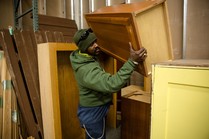
The county supports the reuse and recycling of building materials by incentivizing deconstruction of buildings rather than demolition. Materials commonly salvaged include light and plumbing fixtures, cabinets, doors and windows, wood flooring, and dimensional lumber. The county also provides grants and assistance to schools and businesses to implement waste prevention projects.
|
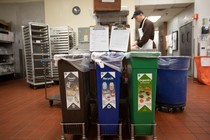
The county is focused on increasing organics recycling and preventing food waste, since organic materials such as food, food-soiled paper, and compostable products make up about 25% of the trash stream.
The county requires businesses that generate large quantities of food waste have food waste recycling, and all cities in the county must make organics services available to households by 2022. The county has worked to prevent food waste with the Stop Food Waste Challenge and by supporting efforts to rescue food for hunger relief.
|
When thinking about climate change, people often wonder: “So, what can I do?” A new article on the climate action website provides a guide for figuring out where best to focus your efforts.
Climate change is a broad issue, so addressing the climate crisis will require a lot of different people putting their skills and talents to work in a lot of different areas. Asking yourself the following questions can help you figure out where best to focus your efforts.
Ask yourself

- What brings you joy? Focusing on something you are passionate about will keep you interested and motivated to help avoid burnout.
- What are you good at? Knowing what special skills, networks, and resources you have can help you figure out how you can uniquely contribute.
- What is the work that needs doing? Addressing climate change requires many people working on many solutions, so consider the wide range of climate solutions and what work you can contribute to.
The intersection of the answers to these three questions represents a good place to focus.
And also ask yourself: what can we do
Think about the organizations you are involved with and the systems you can influence. You don’t need to completely change what you are doing to make a difference – focusing where you already have influence is a good place to start.
Also consider who is your team – the people that you can work with to help you bring about this change. We can accomplish more by working together.
|
|